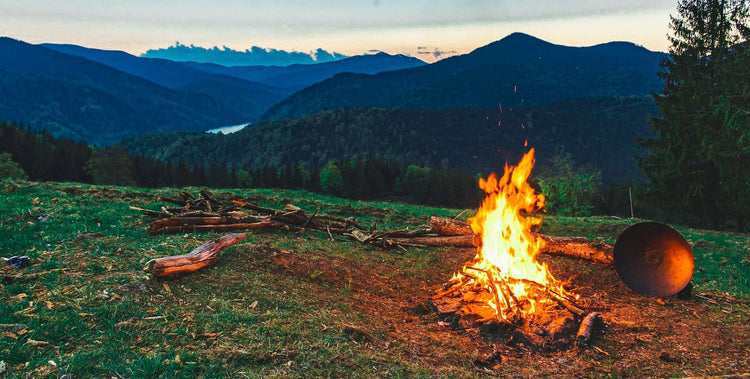When it comes to starting a fire, the arrangement of kindling and fuel wood plays a crucial role. These arrangements, known as "fire lays," vary depending on the conditions. Whether dealing with wet or dry conditions, choosing the right fire lay is essential. Here, we'll explore the six main ways to lay a fire, the situations in which they excel, and their pros and cons.

1. Teepee Fire Lay

Instructions:
2. Lean-To Fire Lay

Instructions:
3. A-Frame Fire Lay

Instructions:
4. Log Cabin Fire Lay

Instructions:
5. Star Fire/Cross Fire

Instructions:
6. Pyramid Fire Lay

Instructions:

1. Teepee Fire Lay
- Pros: Very easy to light
- Cons: Uses lots of wood; no protection from rain or wind

Instructions:
- Place tinder in the center of the fire circle, using materials like toilet paper or cotton balls covered in Vaseline.
- Start with small sticks, forming a teepee shape over the tinder, leaving a "door" for ignition.
- Continue adding larger sticks to build the teepee.
- Light the tinder through the "door."
2. Lean-To Fire Lay
- Pros: Good for rainy or windy conditions
- Cons: Requires more skill; restricts airflow, making it harder to light

Instructions:
- Find a large log or rock as the main "wall" for the lean-to.
- Prop small sticks against the wall to create a roof.
- Build a teepee fire beneath the lean-to.
- As the teepee fire burns, it will ignite the sticks on the roof, sustaining the fire.
3. A-Frame Fire Lay
- Pros: Suitable for rainy or windy conditions
- Cons: Requires skill; restricts airflow; central beam eventually burns down

Instructions:
- Find a long, thick branch as the central "beam."
- Prop the beam on a rock or log.
- Lay small sticks on both sides to form walls.
- Build a teepee fire beneath the main beam.
- As the fire burns, it will ignite the sticks on the roof, sustaining the fire.
4. Log Cabin Fire Lay
- Pros: Requires less effort to maintain; protects against wind; good for drying wet wood
- Cons: Takes longer to build

Instructions:
- Build a teepee fire.
- Create a "fence" around the teepee by stacking kindling sticks.
- As the teepee burns, the fence falls into the fire, creating a self-feeding fire.
5. Star Fire/Cross Fire
- Pros: Uses minimal firewood; good for cooking
- Cons: Creates a small fire; not suitable for wet wood; challenging to maintain

Instructions:
- Start with a small teepee fire.
- Place the ends of fuelwood into the fire.
- Push the wood further into the center as it burns.
6. Pyramid Fire Lay
- Pros: Creates a long-lasting fire; dries wet fuel wood
- Cons: Requires lots of wood; high risk of forest fire

Instructions:
- Start with the largest pieces of fuel wood.
- Arrange them in layers on the ground, changing direction with each layer.
- Build a teepee fire on top of the pyramid.
- As the teepee fire burns down, it will light the fuel wood below.


